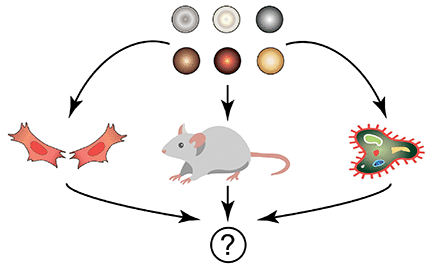Авторы: Фахардо А.Ф., Анастасова Е.Я.,,,, Криштоп В.В., Екатерина Кошевая, Кривошапкина Е.Ф., Кривошапкин П.В.,,, Кошель Е.И., Штиль А.А., Виноградов В.В.

Abstract
Nanostructured drugs are being approved for clinical use, although there is a serious deficit of systematic studies of these materials. Data on toxicity of nanoparticles (NPs) can vary due to different methods of preparation, size, and shape. We investigated the toxicity against cultured human cells, the acute toxicity in mice, and the influence on conjugative transfer of antibiotic resistance genes of clinically relevant NPs such as TiO2, ZrO2, HfO2, Ta2O5, Fe3O4, and AlOOH. NPs were synthesized as aqueous sols by the same method in aqueous solution, with almost identical size 2–10 nm. None of these NPs was cytotoxic at concentrations compatible with water solubility. Furthermore, TiO2, HfO2, Ta2O5, Fe3O4, and AlOOH were not toxic to mice after oral administration. However, ZrO2 showed rather high toxicity, with LD50 2277.8 mg/kg. Experiments with plasmid transfer between bacteria demonstrated that AlOOH NPs were the most hazardous since this material promoted the emergence of resistance to antibiotics. Thus, although our metal oxide NPs are largely non-toxic, their properties may differ in specific biological situations.
doi.org/10.1021/acsabm.9b00615